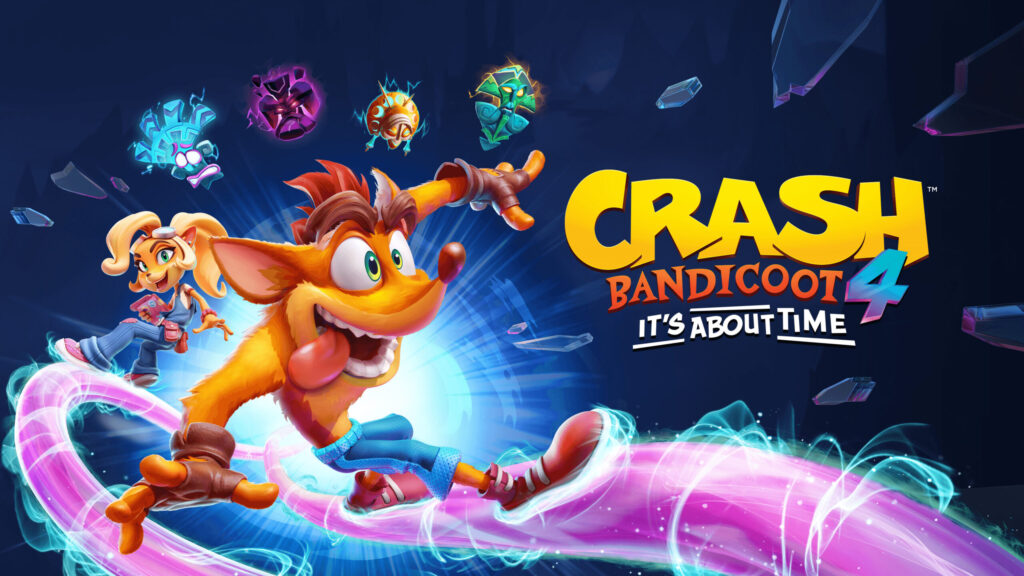
After three fraudulent mainline sequels, four spin-offs, four racing games, and four mobile games; Activision has finally released a numbered sequel to Crash Bandicoot: Warped. When Warped came out it was when the series dropped the numbered designation, which only further confused everything.
Between Warped and every Crash Bandicoot game that came out since, continuity has been very loose. Not that it really mattered, since this was a cartoony platformer about an ineffectual scientist waging a war against a goofy 90s mascot who bounced on crates. The series experimented and changed, further deviating from the linear 3D platforming gauntlet game design with every entry.
Activision is having a winning streak with their recent hit revivals with Spyro Reignited Trilogy, Crash Bandicoot N. Sane Trilogy, and Tony Hawk’s Pro Skater 1+2 all proving that they can produce excellence when they try. Activision and Toys for Bob are so confident in this true follow up to the N. Sane Trilogy, they boldly gave it the number 4.
Crash Bandicoot 4: It’s About Time
Developer: Toys for Bob
Publisher: Activision
Platforms: PlayStation 4, Xbox One (reviewed)
Release Date: October 2, 2020
Players: 1-2
Price: $59.99
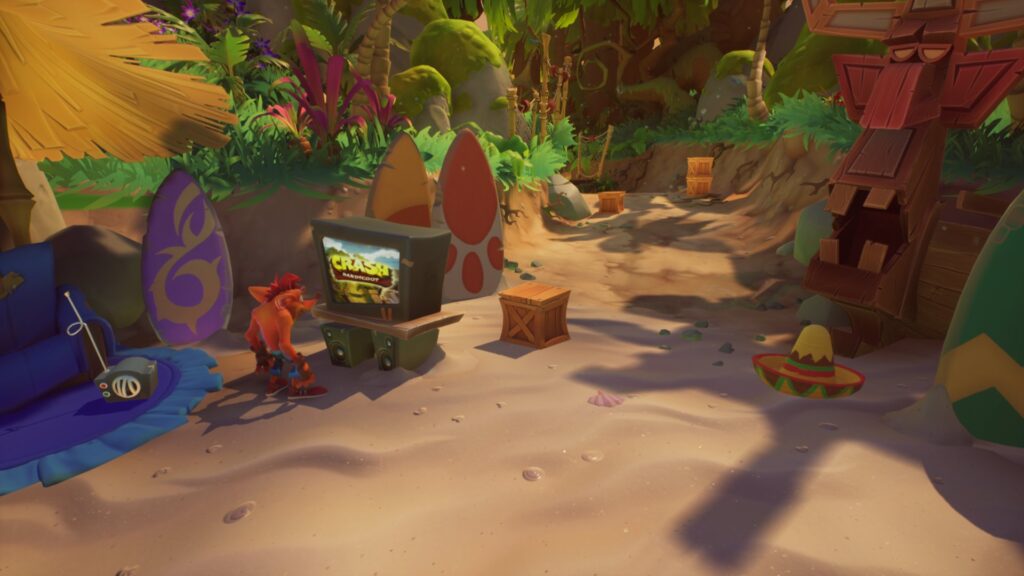
For whatever reason, all Crash games after the second dropped the sequel numbers in their titles. Maybe they were embarrassed they made so many, but now there is no mistaking that Crash Bandicoot 4: It’s About Time is the real sequel.
While some may consider the gameplay old fashioned or even outdated, there is an undeniable appeal to its simplicity. The sequels after Warped would try new things with mixed results and while those games do have their fans, there is nothing else like the original trilogy being made today.
It’s About Time‘s gameplay is very consistent with the linear 3D platforming gauntlets and 2D sections from the N. Sane Trilogy. Levels are long and winding gauntlets of enemies, traps, hazards, and pitfalls. There are stage gimmicks tossed in once in a while to mix things up; like riding a baby polar bear, running away from a lethal threat, or rail grinding.
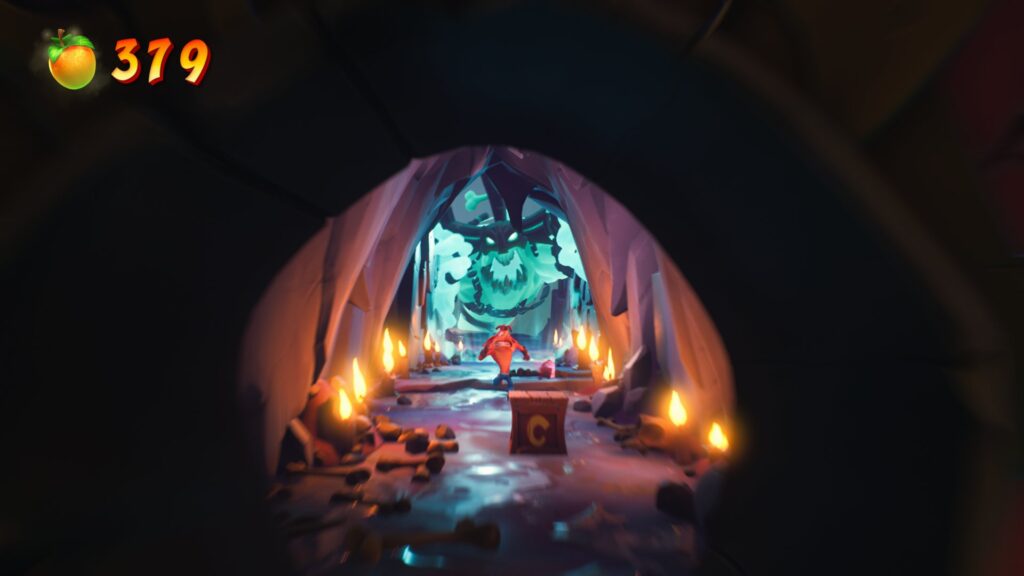
The most notable additions that It’s About Time adds to the Crash formula is the masks who grant Crash a special ability for specified sequences. They are functionally like most stage gimmicks, are peppered through out the game, and get heavy use towards the final stretch.
One mask makes certain platforms or crates appear or disappear, demanding the player juggle careful jumps while switching on and off the presence of solid surfaces to safely land on. The most fun mask to use makes Crash spin at such intense velocity that he effectively glides vast distances like a helicopter, and deflects most attacks.
The least enjoyable mask will reverse gravity and will put Crash on the ceiling. It is typically used to make the player air-juggle Crash around deadly lasers or spikes. This is harder than it sounds, because It’s About Time can be fast moving, and it becomes incredibly hard to control. This is especially frustrating since this mask is usually scripted to be used around instant death pits, and you can’t get a feel for it.

The slow-mo triggering mask is the one that is woefully under utilized, and is acquired very late in the game. Its potential is only realized in bonus areas where the platforming is restricted to a 2D plane, and the challenge is designed to be much higher than in the proper levels.
The overall difficulty in It’s About Time is much higher than one would assume from a cartoony platformer that is aimed for kids. N. Sane Trilogy was a healthy challenge, but like a true successor should be, It’s About Time manages to outclass its hardness with utterly sadistic level design and placement.
Getting to the final boss and beating the game is not too spicy, but the road to achieving 106% is cruel. Each non-boss stage is festooned with crates, and every single one of them must be destroyed. More often than not however, there are going to be several crates that are extremely risky to break. This would be reasonable, if it weren’t for the fact that earning all gems also demands dying less than three times.
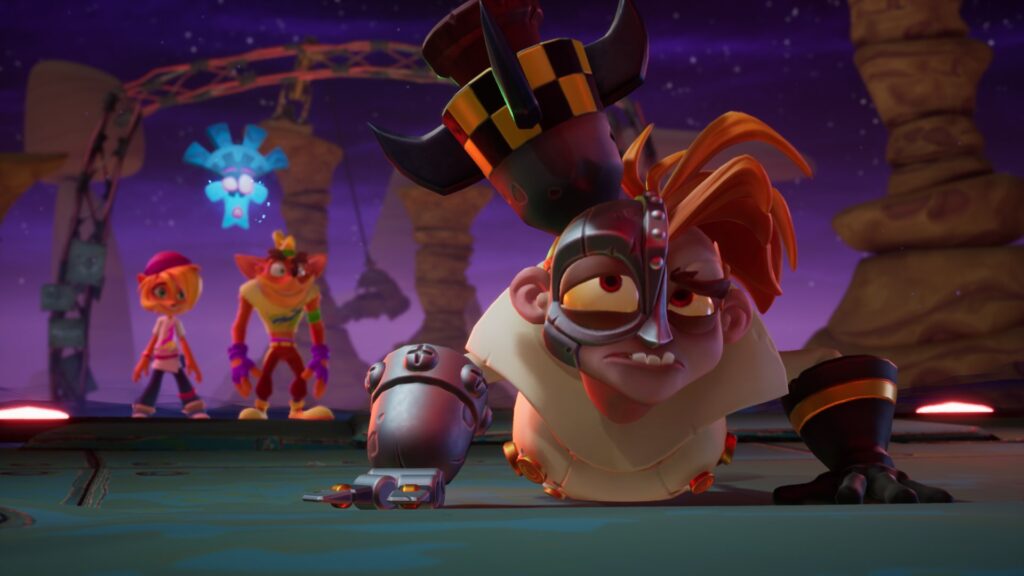
This is a tough challenge, but it is still fair. With a bit of practice, time, and lots of trial and error, anyone could pull off most of these. The real kick to the teeth is that to achieve a complete game, you have to do a perfect run for every level. This means smashing every crate, collecting over 80% of the fruit, grabbing all hidden collectibles, and not dying once.
It feels as hopeless as being a gerbil in the presence of Richard Gere. It’s About Time becomes so much more enjoyable when you let go of your completionist nature, and simply just try to make it out alive. Interrupting your rhythm to go off to a branching area in order risk losing progress from trying to smash a few boxes that are surrounded by deadly Nitro Crates will make you question if its worth it.
The main reward for earning all these gems are alternate skins and costumes for Crash and Coco. Each stage will have about six gems to earn, plus an extra six for an inverted run. Most skins require just six gems, but later areas will start to require a few more. The last few stages will expect you to earn 10 out of the possible 12, which is truly insane since these are the most difficult levels in any Crash game.
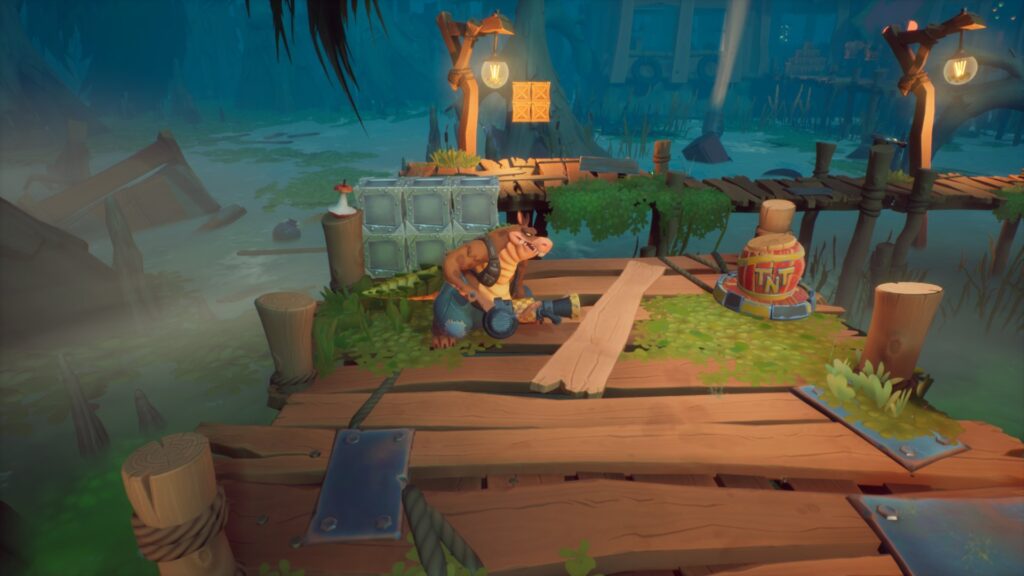
It’s About Time is so challenging that Toys for Bob included a separate mode called “modern” that gives you infinite lives. This is almost an admission that this is going to be the toughest Crash game yet. The developers knowingly had the safety net of players having infinite tries, allowing them the freedom to design the most diabolical levels in a game aimed for children.
With infinite lives, every death counts up as a constant reminder of your many failures. There is also some adaptive difficulty working in the background that activates after dying around 10 times. The game might throw you a bone and subtract one bothersome enemy, or add an extra checkpoint.
Ninja Gaiden Black does not mock you this bad for sucking. The stinging scorn of shame is palpable, and the only reprieve is to merely survive the perils and try to bury the embarrassment deep into your subconscious.
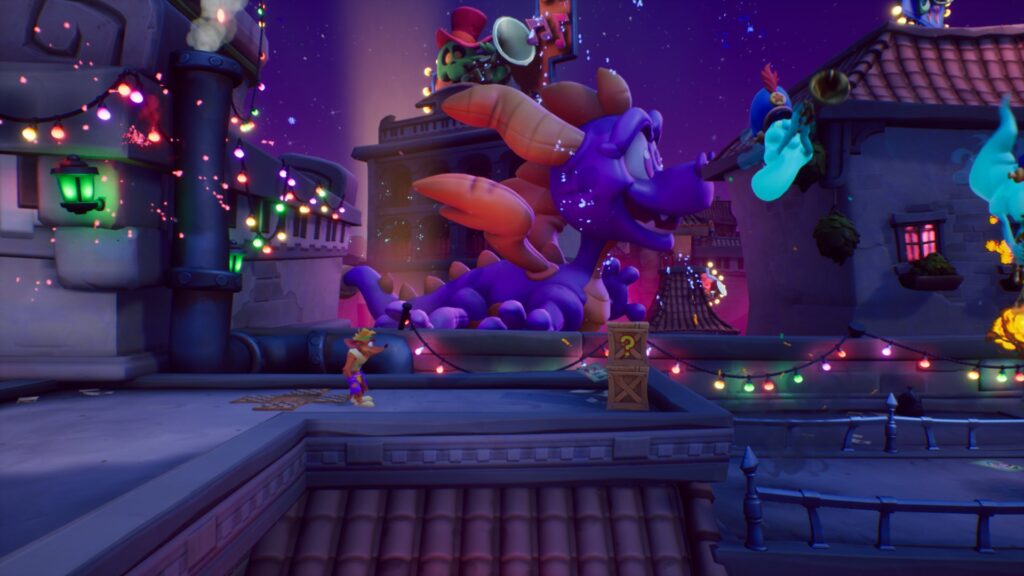
In It’s About Time, Crash and the boys will hopping between dimensions, eras and different universes. Pirate ships, cities of the future, prehistory, and even the same year the original Crash Bandicoot came out are only a few locations. Each setting only gets a handful of levels, a total of somewhere over 40.
The settings never overstay their welcome, since there are only a few levels per dimension. This keeps things fresh, and you are always seeing something new and exciting. Sometimes a stage will switch Crash and Coco out for a totally different character with their own play style.
Tawna has a hook-shot that can target distant enemies and crates, while also pulling her to new areas. She can’t use any of the mask powers, but fights like a brawler with a one-two punch and kick. Dingodile is enormous and is surprisingly agile, with his vacuum gun that can make him hover. His blunderbuss is also capable of sucking up crates and explosives at enemies, making him one of the more fun characters.
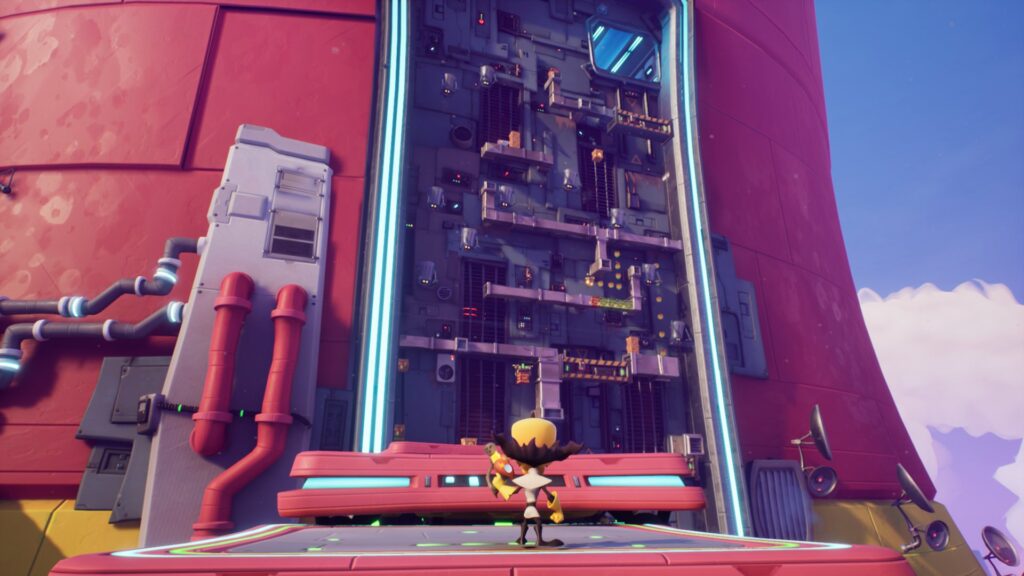
Neo Cortex is the third unique character, and is also the least enjoyable. His gameplay functions like a puzzle platformer, with his gun transforming enemies into bouncy blocks or platforms. He has no double-jump, can’t hover, and has no ground pound. Instead he has a Mega Man X style air-dash, which is a little weird and does not make sense for his character.
Being forced to play as these other characters is rare, and most of their stages are optional sequences that show their perspective on a previous Crash or Coco stage. A set-piece involving Crash having to run away from a massive killer truck is explained in Tawna’s level, for instance.
Toys for Bob had the grace to make most of these optional so as to not constrict players who may not enjoy their playstyle. Their inclusion does add some variety, and having some choice in a linear 3D platformer is novel.
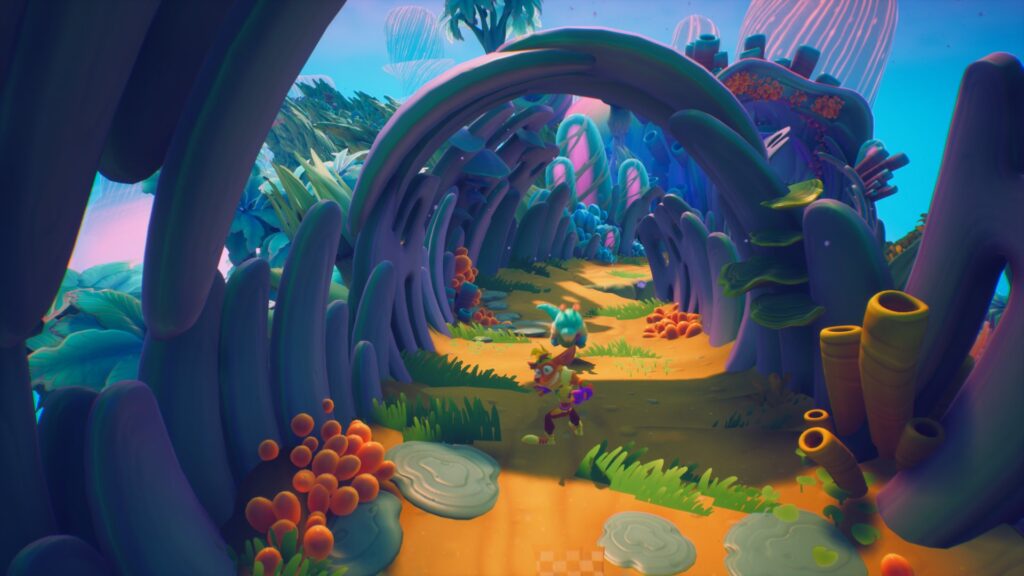
It’s About Time has a slightly different look to it than what was established with the N. Sane Trilogy. The trilogy remake boasted impressive looking fur effects on Crash, and the world had a grittiness to it. Materials were more realistic had impressive details and shader effects.
Despite the change in art direction, It’s About Time is still a beautiful looking game. The trade-off for realism is a much higher frame rate than what the N. Sane Trilogy had. It’s About Time runs at a mostly locked 60 frames per second. The only distracting hitches that occurred were at very specific points in the pirate world, while grinding on a rail at high speeds where frame rate plummeted to single digits.
The artists involved truly know how to play with Unreal 4’s features to their fullest. The worlds express a wide range of color language, and lush environments that draw you in by how breathtaking the vistas can be. It’s About Time barely looks like a video game, and resembles a Dreamworks CGI cartoon most of the time.
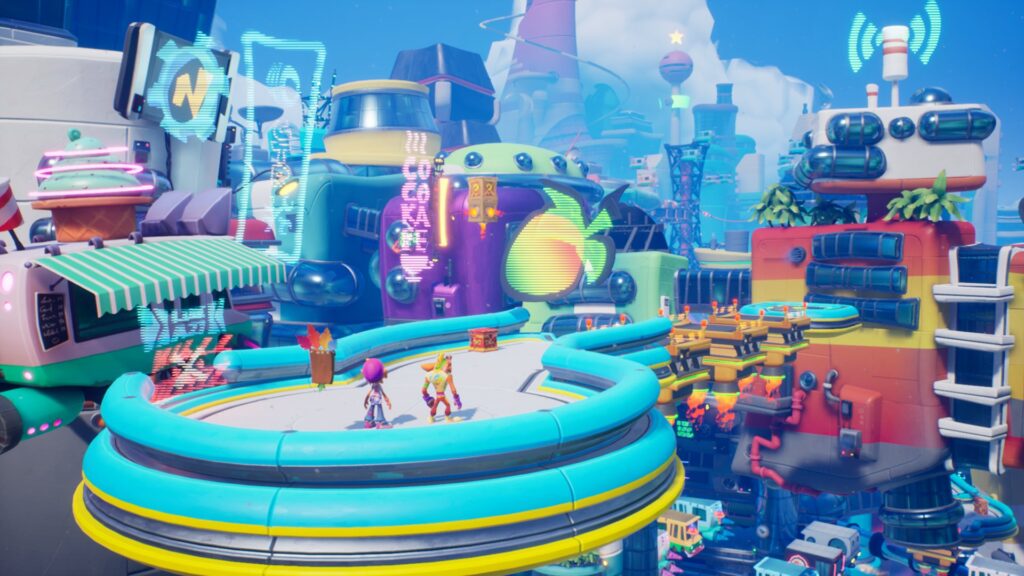
The care put into character expression and animation is on par with what is seen in animated movies. Faces are highly animated, and the bounce in Crash’s step as he subtly squashes and stretches grounds him in the world.
The ambitious scope of having so many different locations must have been a nightmare for the art team, but the poor devils pulled it off magnificently. It is an artistic achievement to have such an unbelievably dense breadth of design work in a single game. There is an absolute bare minimum of recycled assets, which makes every place feel so unique and special.
The variety of visuals compounds on itself when exploring the inverted version of stages. This is It’s About Time’s answer to mirrored levels, where they are not just remixed, but their art style gets totally scrambled too. The imagery is utterly lurid and psychedelic.
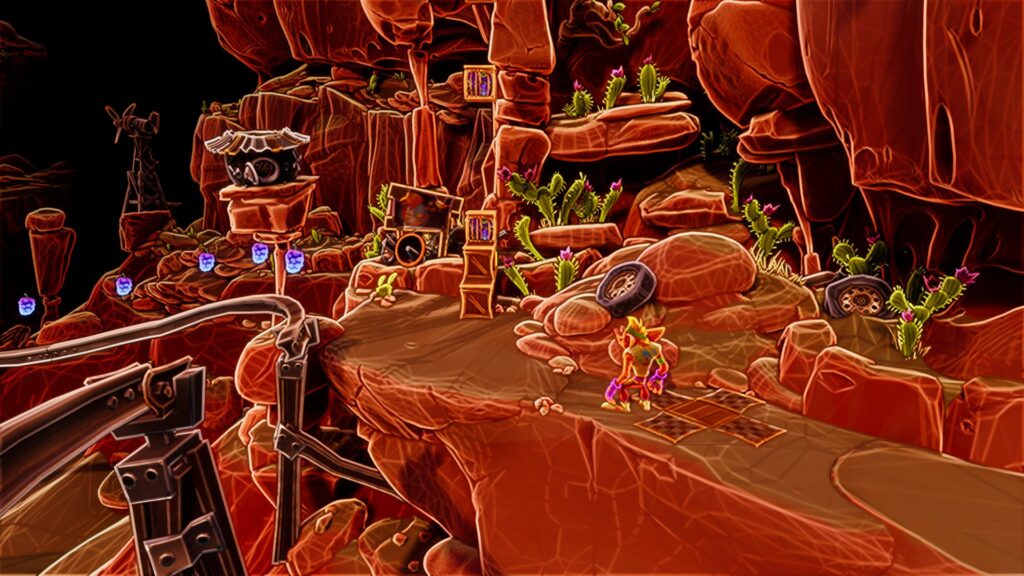
The music is mostly forgettable; not a single memorable tune outside of the classic Crash Bandicoot theme that gets a few remixes. What is present is serviceable and inoffensive; it gets the job done of filling out the dead air.
The voice acting is also standard cartoon style performances. Several veteran voice actors that stand out are Greg Eagles and Richard Horvitz, because they have the most distinctive voices and don’t come off as generic. The rest of the cast could be replaced, and nobody would be able to tell the difference.
The writing is broad and predictable. Most story elements can be seen coming a mile away by a blind man. The biggest surprise being Dingodile’s introduction, which comes suddenly and has the best comedic timing out of any gag in the story. Cortex ends up as the most obnoxious and moronic character in the game. He never feels like a threat, and is hard to care whenever he speaks.
N. Gin is the coolest of the antagonists because he speaks like a cybernetic Peter Lorre, and his battle is designed around a rock concert theme. Sadly he is too cool for this game, and is also the first off the main antagonists to be defeated, severely limiting his screen time.
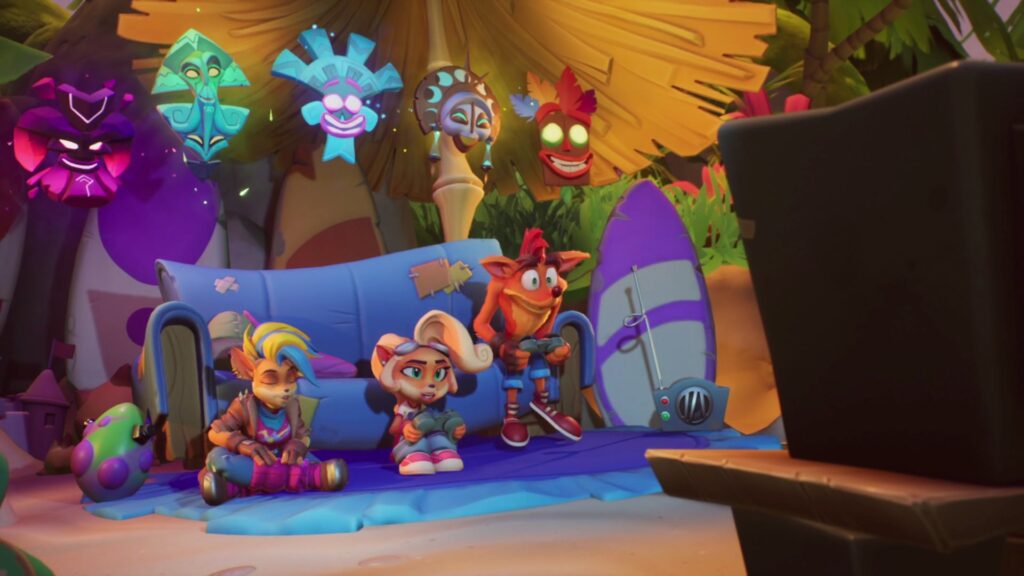
Crash Bandicoot 4: It’s About Time is truly worthy of wearing the big number four in its title. It’s the toughest, and has the most gameplay variety packed into a single game. For every non boss level, there is an inverted counterpart that comes with its own gems to earn.
Replay value is high if you have the guts and stamina to earn almost 30 skins, and to acquire all the relics. It’s About Time might run a bit steep for what is effectively a meaty PlayStation 1 game with Pixar graphics, but this is the core ethos of Crash Bandicoot. If you enjoyed the N. Sane Trilogy, you will adore this.
Crash Bandicoot 4: It’s About Time was reviewed on Xbox One X, using a retail copy purchased by Niche Gamer. You can find additional information about Niche Gamer’s review/ethics policy here.